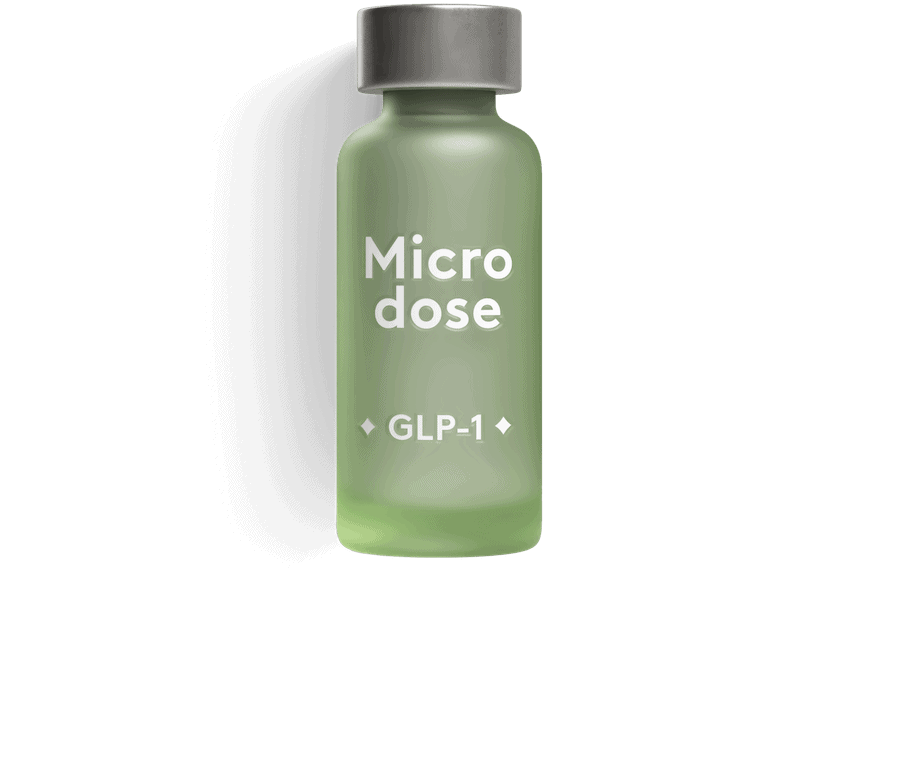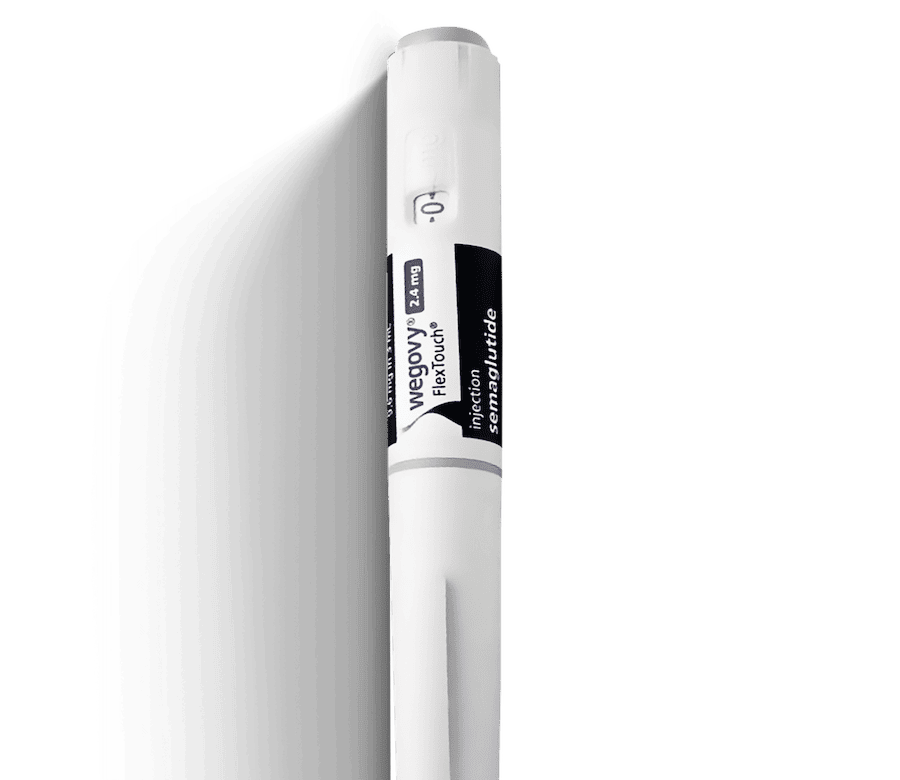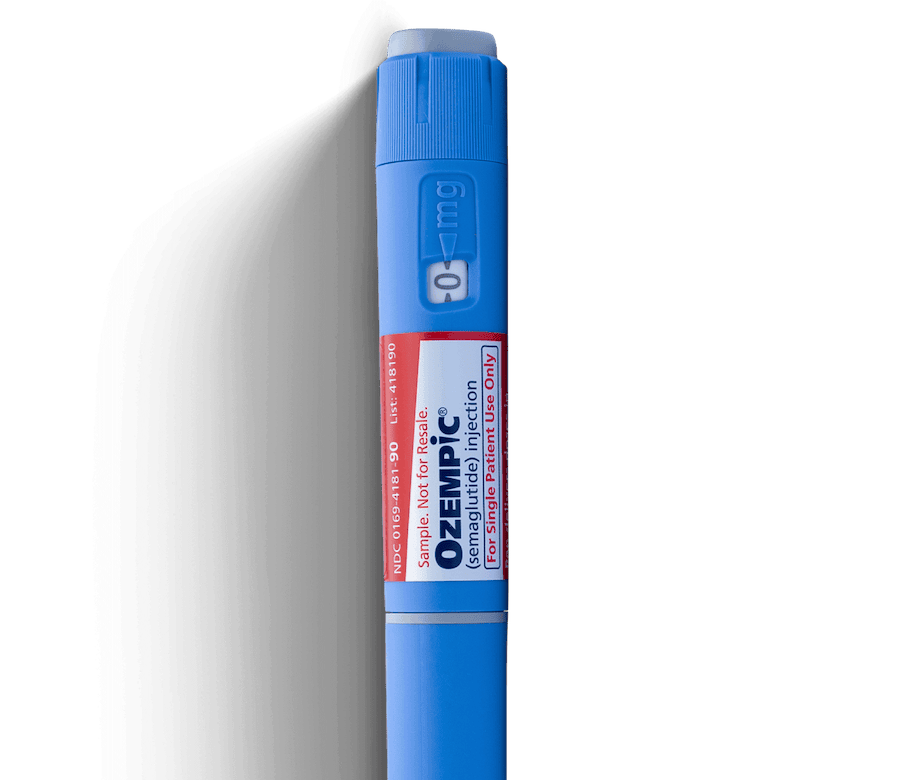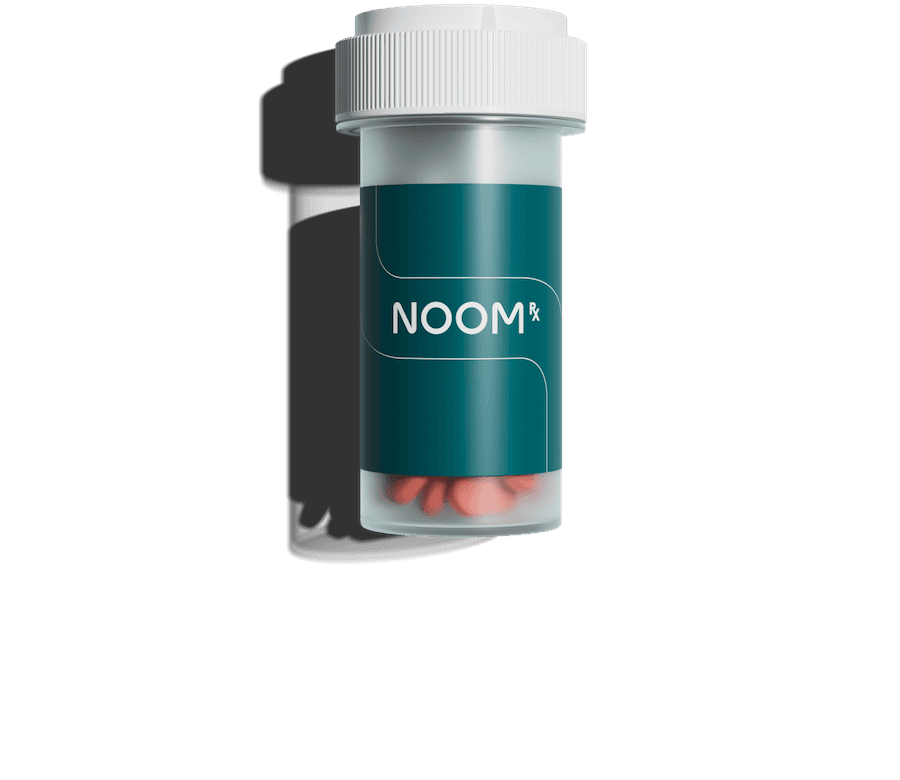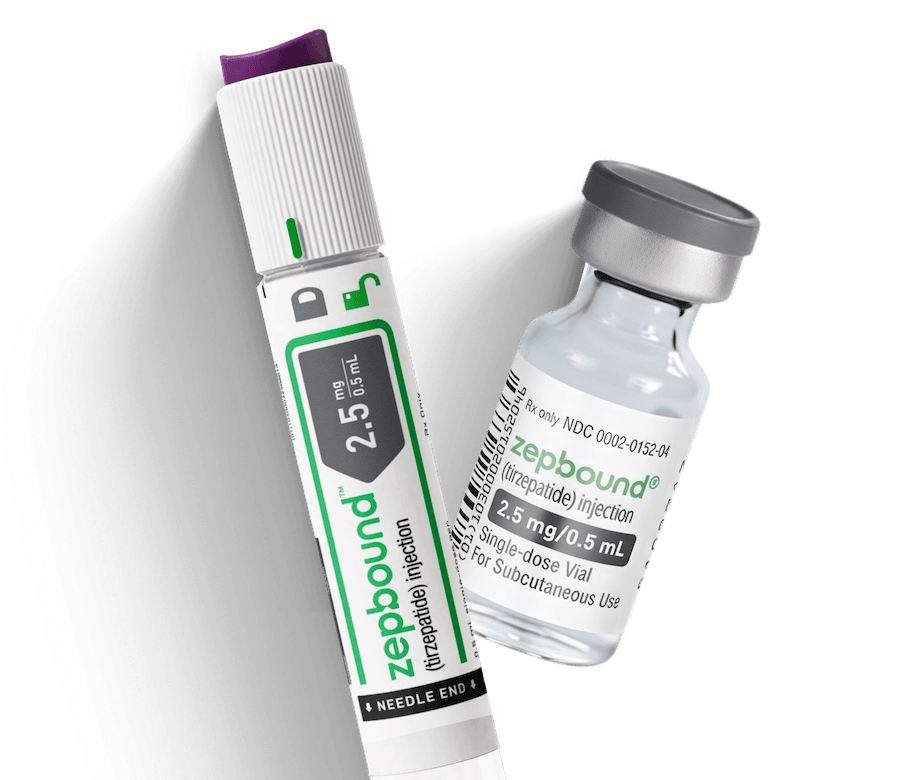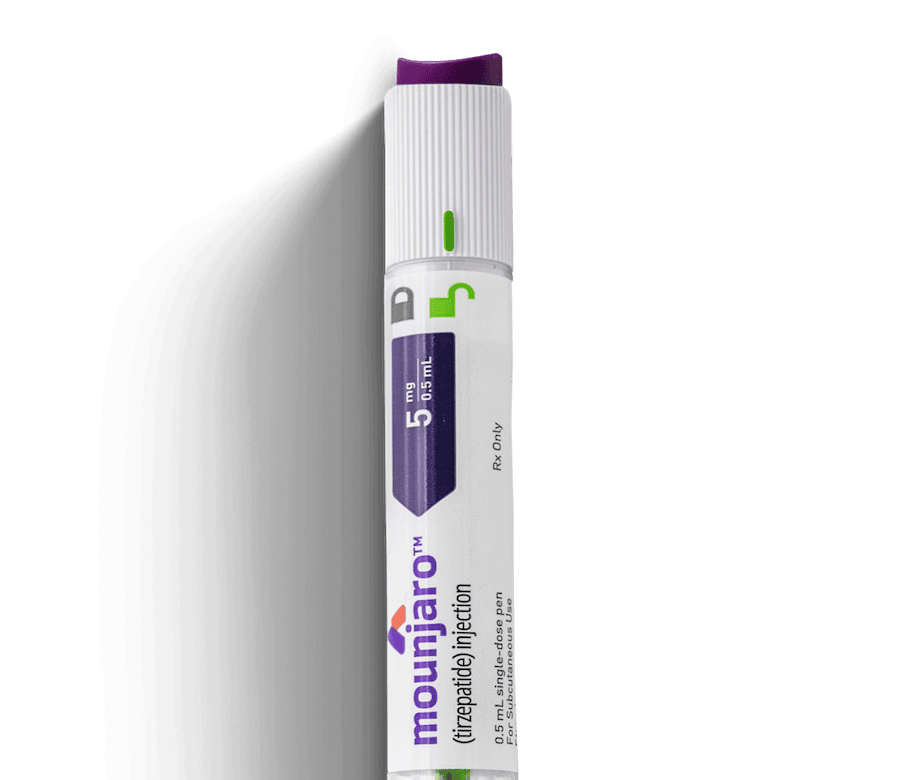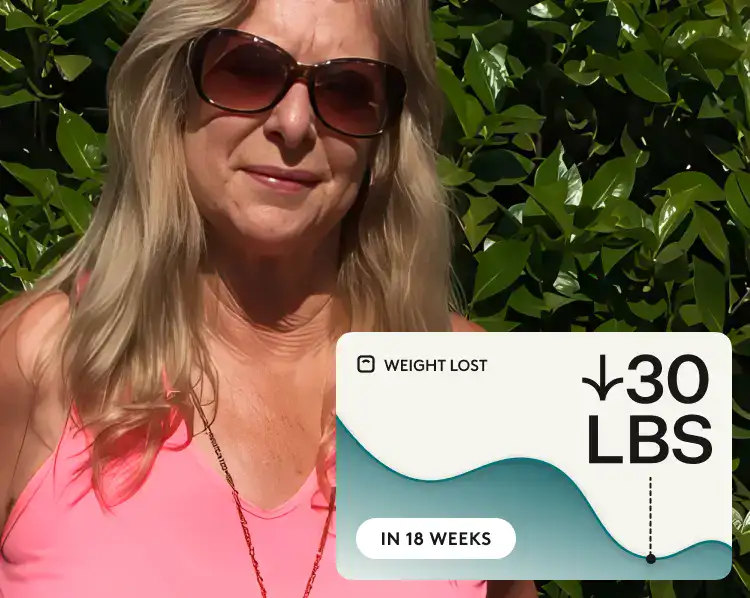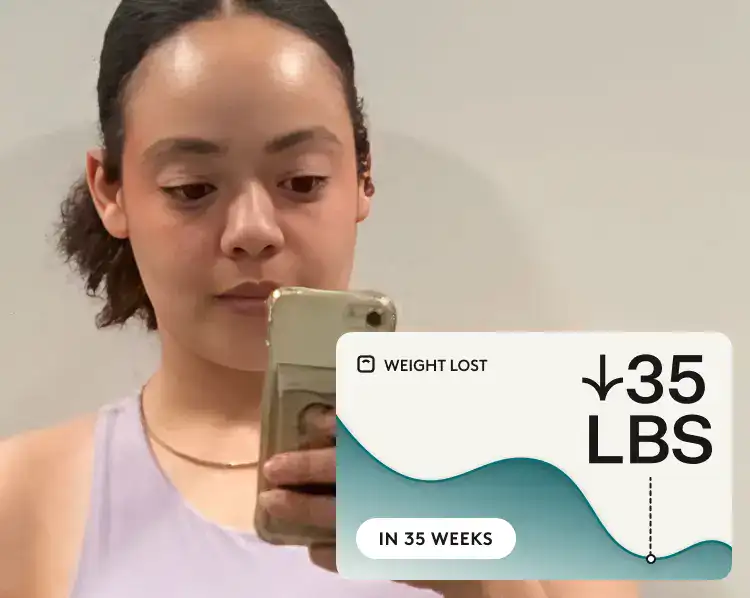What you’ll learn:
- Most side effects from Wegovy and Zepbound are digestive, mild, and tend to fade as your body adjusts to the dose.
- Studies suggest that Wegovy tends to bring more nausea or constipation, while Zepbound can cause a bit more injection site irritation.
- The “safer” choice depends on how your body responds, which is why working with a provider helps you find the right fit.
Wegovy® and Zepbound® have transformed how people approach weight loss, and for many looking for a weight loss medication, these are the two main choices. These two GLP-1 medications are among the most effective for weight loss ever made. And while many ask which will help them lose the most weight, the side effects and how they’ll feel day to day taking them are important, too.
Public figures like Amy Schumer have helped highlight how different these medications can feel in real life. After experiencing severe nausea and fatigue on semaglutide (Wegovy®), she later described tirzepatide (Zepbound®) as far more tolerable—especially combined with her hormone therapy for perimenopause.
Her story captures an important reality supported by early studies: while both medications are effective, their side effects can differ from one person to another. Let’s look at what research actually says about these two medications and how their side effects compare.
Wegovy® vs. Zepbound®: How do they work?
Wegovy® and Zepbound® work with your body’s own hormones to lower appetite and slow digestion. They share a similar foundation but differ in how many pathways they activate.
- Wegovy® (semaglutide): Wegovy® mimics the hormone GLP-1 (glucagon-like peptide-1) and binds to GLP-1 receptors found throughout your body, like the brain, pancreas, and gut. When activated, these receptors send signals that help reduce appetite, slow digestion, and regulate blood sugar. This process helps you feel full longer and eat less.
- Zepbound® (tirzepatide): Zepbound® works a little differently by activating GIP (glucose-dependent insulinotropic polypeptide) along with GLP-1. GIP helps your body use energy more efficiently, manage fat storage, and maintain stable blood sugar levels. Together, GLP-1 and GIP create a kind of synergistic effect that balances appetite and digestion.
Learn more about how Wegovy® and Zepbound® work.
Why do they cause side effects?
The same things that make Wegovy® and Zepbound® effective for weight loss can also cause side effects as your body adjusts. These medications slow how quickly food leaves your stomach and shift appetite signals in the brain, which helps reduce hunger and support steady weight loss. As the digestive system adapts to this slower pace, some temporary digestive side effects may show up.
- Nausea and vomiting: This can happen because food stays in the stomach longer.
- Bloatings: Even normal meal sizes can feel like “too much” while digestion is adjusting.
- Heartburn or indigestion: Slower emptying can create more pressure in the stomach, which can push upward and trigger reflux.
- Constipation: The gut moves more slowly, so the colon absorbs more water from stool, making it firmer and harder to pass.
Most of these side effects improve over time, especially when dose increases are gradual. Eating smaller portions, slowing down meals, staying hydrated, and focusing on protein-first balanced meals can make the adjustment more comfortable.
Wegovy® vs. Zepbound®: Common side effects and differences
Both Wegovy® and Zepbound® mimic hormones that control appetite, digestion, and blood sugar. Because they work through similar pathways, they tend to cause many of the same side effects. Research suggests these side effects are dose-dependent, which is why both medications are started at a low dose and gradually titrated upwards—giving your body time to adjust.
Gastrointestinal symptoms
Digestive side effects are the most common with GLP-1 medications. Below are the most common ones seen in studies comparing Wegovy® (semaglutide) and Zepbound® (tirzepatide), along with general recommendations to make them more manageable:
| Symptom | Wegovy® (Semaglutide) 1.7–2.4 mg | Zepbound® (Tirzepatide) 10–15 mg | What can help |
|---|---|---|---|
| Nausea | 44% | 44% | Try eating smaller portions and steer clear of foods that are greasy, spicy, or too heavy. |
| Vomiting | 21% | 15% | Stick to bland foods and sip fluids slowly. |
| Diarrhea | 23% | 24% | Stay hydrated and choose light, low-fiber meals. |
| Constipation | 29% | 27% | Add fiber gradually, drink water, and stay active through regular exercise. |
| Abdominal pain | 7% | 6% | Eat smaller portions and rest your stomach with lighter foods. |
| Dyspepsia (indigestion) | 7% | 6% | Stay upright after eating and avoid large, rich meals. |
| GERD (acid reflux) | 11% | 6% | Avoid late-night meals, elevate your head while sleeping, and limit acidic foods. |
Shared side effects:
- Nausea: The most common symptom for both, affecting about 44% of people for both medications.
- Diarrhea: Occurs at nearly the same rate, around 23% for Wegovy vs. 24% for Zepbound.
- Abdominal pain and indigestion: These milder issues show up occasionally, affecting about 6 to 7% of users overall.
Notable differences:
- Vomiting: Reported more often with Wegovy® (21%) than with Zepbound® (15%).
- Constipation: Slightly higher with Wegovy® at 29% versus Zebound at 27%.
- GERD (acid reflux): Also more common with Wegovy®, 11% versus 6% with Zepbound®.
Other symptoms
Beyond digestive changes, some people in clinical studies also noticed general effects like fatigue, dizziness, headaches, or mild irritation where the injection was given. These are less common overall but still worth knowing about.
| Symptom | Wegovy® (Semaglutide) 1.7–2.4 mg | Zepbound® (Tirzepatide) 10–15 mg | What may help |
|---|---|---|---|
| Fatigue | 12% | 10% | Stay well hydrated and eat an adequate amount of protein. |
| Dizziness | 5% | 6% | Drink plenty of water and keep your meals balanced to help maintain steady blood sugar levels. |
| Headache | 7% | 7% | Take breaks from screens, drink water regularly, and rest in a dim space if needed. |
| Injection site irritation | <1% | 9% | Rotate injection spots and apply a cool compress afterward if redness appears. |
Headache and dizziness occurred at similar rates with both Wegovy® and Zepbound® and were generally mild. Fatigue appeared slightly more often with Wegovy®, while injection site irritation was reported more frequently with Zepbound®.
Learn more about the common side effects of Wegovy® and Zepbound®.
Do females experience different side effects with Zepbound® vs. Wegovy®?
Zepbound® and Wegovy® don’t cause side effects that are exclusive to females, but hormones and metabolism can influence how the body reacts. Here’s what some may notice:
- Stronger stomach effects: Studies suggest that women tend to report certain GLP-1 side effects more often than men. Women experienced higher rates of nausea, vomiting, diarrhea, and abdominal discomfort compared to men while using GLP-1 medications. Headache and dizziness were also reported slightly more frequently.
- Cycle and fertility changes: Improved insulin balance from Wegovy® or Zepbound® can lead to more regular periods, which can be helpful for those with PCOS. Those same hormonal improvements can also make ovulation more predictable, increasing the chance of pregnancy. Both should be stopped 2 months before trying to conceive.
- Possible impact on birth control: Because GLP-1s slow digestion, there’s some evidence oral birth control pills may not be absorbed as effectively.
Everyone’s experience is different, so it’s always best to talk with your healthcare provider about any changes you notice and future family planning.
Learn more: Tirzepatide vs. semaglutide: Understanding and comparing side effects
Wegovy® vs. Zepbound®: Severe side effects and warnings
Severe side effects are rare with Wegovy® and Zepbound®, and the types of reactions found in each of their prescribing information are largely the same. Still, it’s important to recognize the warning signs and know when to reach out for help. Below are symptoms to be aware of:
- Pancreatitis: If you develop sudden or severe stomach pain that won’t go away, especially if it spreads to your back or comes with vomiting, get immediate medical attention.
- Gallbladder problems: Get immediate medical attention if you feel pain in the upper right abdomen, develop a fever, yellowing of your skin or eyes, or have unusually light-colored stools.
- Kidney issues: If you notice swelling, fatigue, or a big drop in how much you urinate, especially if you’ve had ongoing vomiting or diarrhea, get medical attention.
- Low blood sugar (hypoglycemia): If you also take insulin or certain diabetes medications, watch for shakiness, sweating, dizziness, or confusion. Contact your provider if symptoms don’t improve.
- Vision changes: Get immediate care if you experience sudden changes in vision.
- Severe allergic reactions: Seek emergency care immediately if you experience swelling of your face, lips, tongue, or throat, have trouble breathing, or develop a rash or intense itching.
- Thyroid tumors: Both medications include an FDA boxed warning about a possible risk of thyroid C-cell tumors, based on animal studies. Any neck lumps, hoarseness, or trouble swallowing need to be evaluated immediately.
Who shouldn’t take Wegovy® or Zepbound®?
While Wegovy® and Zepbound® are safe and effective for many people, they’re not right for everyone. Your healthcare provider will review your medical history carefully before prescribing either medication.
You should not take Wegovy® or Zepbound® if you:
- Have a personal or family history of medullary thyroid carcinoma (MTC) or multiple endocrine neoplasia syndrome type 2 (MEN 2)
- Have ever had a serious allergic reaction to semaglutide, tirzepatide, or any ingredient in these medications
- Are pregnant, breastfeeding, or trying to conceive.
Before starting treatment, make sure to tell your doctor if you:
- Have or have ever had pancreatitis, kidney problems, or gallbladder issues
- Have and a history of diabetic retinopathy
- Have or have had depression, suicidal thoughts, or other mental health concerns
Learn more about the full safety information for Wegovy® and Zepbound®.
Wegovy® vs. Zepbound®: Do side effects differ by dosage?
The types of side effects from Wegovy® and Zepbound® stay the same across doses, but their likelihood increases as your dose goes up. Both medications follow a slow, step-up schedule for this reason. This gradual increase helps your body adjust and keeps symptoms like nausea or constipation from becoming too strong early on.
Wegovy®: Doses include 0.25 mg, 0.5 mg, 1 mg, 1.7 mg, and 2.4 mg. Treatment begins at 0.25 mg once weekly and typically increases every four weeks until reaching a maintenance dose of 1.7 mg or 2.4 mg.
Learn more: Wegovy® dosage guide: Finding the right dose for weight loss results
Zepbound®: Doses include 2.5 mg, 5 mg, 7.5 mg, 10 mg, 12.5 mg, and 15 mg. It starts at 2.5 mg once weekly for the first four weeks, then moves up step by step as your body adjusts until you reach your ideal maintenance dose.
Learn more: Zepbound® dosage guide: How to find the right dose for weight loss
Your provider will personalize your schedule based on how your body responds, balancing comfort with progress for the best overall results.
Does using Zepbound® vials cause more injection site side effects?
There’s currently no conclusive data showing that Zepbound® vials cause more injection site side effects than the single-dose pen. Both options contain the same medication, ingredients, and concentration, so they work the same way in the body. They are actually the same vials that are inside the pens.
Rx weight loss, the right way, with Noom
Get access to prescription weight loss medication with Noom.Wegovy® vs. Zepbound®: Which is better for weight loss?
Zepbound® tends to lead to greater average weight loss than Wegovy®, though that doesn’t mean it’s automatically the better choice for everyone. The differences in how each medication works—Wegovy® activating GLP-1 only, and Zepbound® activating both GLP-1 and GIP—can also make your side effect experience on one medication different from the other.
Here’s how their weight-loss outcomes compare at each medication’s highest approved doses:
- Wegovy® (2.4 mg): 15% average body weight reduction
- Zepbound® (15 mg): 21% average body weight reduction
The right medication for you isn’t always about the data alone. Choosing between them often depends on practical details, such as side effect tolerance and personal health goals. Both medications can support meaningful, steady weight loss when paired with sustainable habits and regular follow-ups with your healthcare provider.
How long does it take to see results?
Weight loss with both medications takes time and varies from person to person. Most people begin noticing changes within the first few months, with more visible results by the six-month mark. Side effects often ease over that same period as your system adjusts.
Here’s how weight loss progress typically looks:
| Timeframe | Wegovy® 2.4 mg (Avg. % weight lost) | Zepbound® 15 mg (Avg. % weight lost) |
|---|---|---|
| 3 months | 5% | 8% |
| 6 months | 11% | 15% |
| 12 months | 15% | 21% |
Learn more: Wegovy® vs. Zepbound® for weight loss: Which one works best in 2025?
Can I switch between Wegovy® and Zepbound®?
Yes, it’s possible to switch between Wegovy® and Zepbound®, but side effects are often a big part of that decision. Some people find that one medication causes stronger nausea or bloating—especially at higher doses—and may do better staying at a lower dose longer before switching. In some cases, your provider might recommend moving from Wegovy® to Zepbound® (or vice versa) to find a better balance between comfort and results.
Other reasons people switch include:
- Weight loss progress has slowed or plateaued
- Insurance or pharmacy access changes
- Cost differences make one medication easier to maintain
Your doctor will adjust your new dose to match your previous one, helping your body adjust smoothly. You may notice temporary changes in appetite, digestion, or energy, but these typically improve as your body adjusts to the new medication.
If you’re considering a switch, consult with your healthcare provider to discuss what to expect and the best timing for making the change safely.
Wegovy® vs. Zepbound®: Costs and insurance considerations
Price can be a deciding factor when choosing between Wegovy® and Zepbound®. Both are brand-name GLP-1 medications that can cost over $1,000 a month without insurance, but insurance coverage, discounts, and savings programs can make a difference in your out-of-pocket costs.
Here’s what the costs typically look like:
| Factor | Wegovy® | Zepbound® |
|---|---|---|
| Price per month (without insurance) | $1,350 Novocare Pharmacy: $499 per month for all doses Learn more | Prefilled pens: $1,086 LillyDirect® offers lower prices for single-use vials: $349 (2.5 mg) $499 (5 mg, 7.5 mg, 10 mg, 12.5 mg, 15 mg) Learn more |
Does insurance cover Wegovy® or Zepbound®?
Coverage for these medications is unlikely, but it’s slowly improving. What you pay depends on your insurance plan and whether your provider includes coverage for weight-loss medications (most don’t).
- Employer plans: Some employers may include coverage, but it depends on the plan. Your HR or benefits team can help you confirm.
- Private insurance: Coverage is still rare, though that’s slowly changing. Always check directly with your insurer, since policies vary by state and provider.
- Medicare: Currently, Medicare doesn’t cover weight-loss medications. However, Wegovy® may be covered when prescribed for cardiovascular risk reduction, and Zepbound® may be covered for obstructive sleep apnea (OSA). These exceptions depend on the plan, so it’s worth asking your provider or checking your Part D details. There also might be some changes coming starting mid-2026. Medicare will have a pilot program with these medications, so they will be covered with restrictions, but everything is still very unclear.
- Medicaid: Coverage varies by state. A few Medicaid programs now include GLP-1 medications for weight management, while others limit coverage to diabetes treatment. Your local Medicaid office can confirm what’s available in your area.
If cost is a deciding factor, your doctor or pharmacist can help you navigate available savings programs and find the most budget-friendly option.
Wegovy® vs. Zepbound®: Which is right for me?
If you’re deciding between Wegovy® and Zepbound®, it often comes down to how your body reacts to each drug. Both are powerful GLP-1–based medications that support weight loss, but the day-to-day experience can be a little different for everyone. Factors like nausea, fatigue, and digestive changes can play a big role in choosing the right fit.
Below is an overview of how Wegovy® and Zepbound® compare in terms of side effects and other practical details that might shape your choice.
| Factor | Wegovy® | Zepbound® |
|---|---|---|
| Active ingredient | Semaglutide | Tirzepatide |
| Effectiveness | Average weight loss of 15% after one year at 2.4 mg | Average weight loss of 21% after one year at 15 mg |
| Most common side effects | Nausea, vomiting, diarrhea, constipation, or GERD. | Same. |
| More reported side effects (compared to each other) | Vomiting, constipation, GERD, and fatigue might occur more often with Wegovy®. | Injection site irritation might occur more often with Zepbound®. |
| Dosage and administration | Once-weekly injection using a prefilled pen in these strengths: 0.25 mg 0.5 mg 1 mg 1.7 mg 2.4 mg Learn more. | Once-weekly injection using a prefilled pen or single-use vial in these strengths: 2.5 mg 5 mg 7.5 mg 10 mg 12.5 mg 15 mg Learn more. |
| Insurance coverage | Coverage varies by plan, but it’s unlikely to be covered for weight loss. Medicare may cover it when prescribed for cardiovascular risk reduction. | Also unlikely to be covered for weight loss. Medicare may cover it when prescribed for obstructive sleep apnea (OSA). |
| Monthly cost | List price around $1,350 $499/month through the NovoCare® Pharmacy Learn more. | List price around $1,087 Vials through LillyDirect®: $349/month (2.5 mg) $499/month (5 mg, 7.5 mg, 10 mg, 12.5 mg, 15 mg) Learn more. |
The bottom line: People taking Zepbound may experience fewer side effects
Wegovy® and Zepbound® might affect people differently, but the side effects remain the same. Both can cause temporary digestive symptoms like nausea, diarrhea, or constipation, especially in the beginning. Wegovy® may bring a bit more constipation or vomiting, while Zepbound® users tend to notice more injection site irritation. For most, these symptoms ease as their body adjusts and doses increase gradually.
Finding the right fit isn’t about avoiding side effects altogether—it’s about managing them in a way that feels sustainable. Some people tolerate Wegovy® better, others feel more comfortable on Zepbound®, but both have strong safety records when used under medical guidance.
If you’re interested in learning more about GLP-1 weight loss treatment, see if you qualify for Noom Med. You’ll work with a licensed clinician who can find the right medication for you, prescribe it if needed, and personalize your plan. They’ll help you manage side effects and create a personalized program that will guide you toward steady, lasting results.
Why you can trust us
At Noom, we’re committed to providing health information that’s grounded in reliable science and expert review. Our content is created with the support of qualified professionals and based on well-established research from trusted medical and scientific organizations. Learn more about the experts behind our content on our Health Expert Team page.



